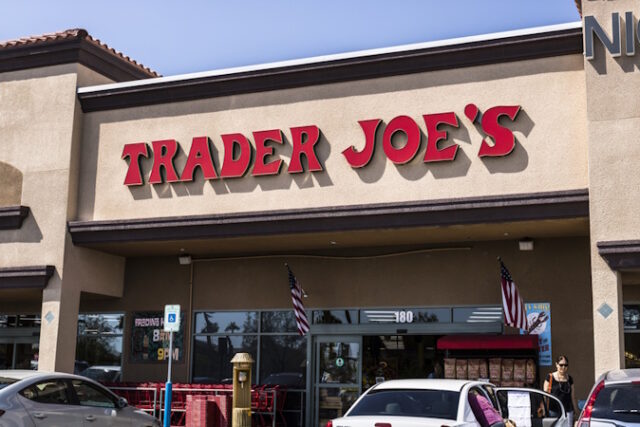
It may not be too “appeeling,” but the price of some bananas is rising by a few cents.
Trader Joe’s recently upped the price for a single banana to 23 cents, a 4-cent — or 21% — increase from the grocer’s previous going rate for the fruit that had remained unchanged for over 20 years.
“We only change our prices when our costs change, and after holding our price for Bananas at 19¢ each for more than two decades, we’ve now reached a point where this change is necessary,” a spokesperson for the chain based in Monrovia, California, said.
In contrast to other foods more heavily impacted by inflation, bananas have stayed relatively affordable over time — with average global prices never exceeding more than about 80 cents per pound (0.45 kilograms).
Still, banana prices have seen some jumps in recent years. And it’s not just impacting Trader Joe’s shoppers.
In the U.S., the cost of a pound of bananas averaged about 63 cents last month. That’s only 3 cents more than it was a decade ago, government data shows, but about 6 cents higher than prices reported at the start of 2020, in the months before COVID-19 was declared a global pandemic.
Around the world, banana prices saw their most notable pandemic-era spikes in 2022 — with the global average price per metric ton increasing by more than $520 over the course of that year, according to the Federal Reserve Bank of St. Louis, citing International Monetary Fund numbers. Those prices drifted back down some in 2023, but still remain elevated.
“Bananas are a very popular fruit among consumers, so retailers try to keep prices low,” Neil Saunders, managing director at research firm GlobalData, notes. “However, prices cannot defy gravity forever and (we are) now starting to see retailers like Trader Joe’s make adjustments.”
One of the main reasons behind these increases is the rising cost of farming bananas, Saunders added, noting that fertilizer, pesticide and transportation prices have all gone up due to general inflation.
At the same time, demand for bananas has been growing, he said. That creates an imbalance with supply as exporters face pressures of higher costs, greater prevalence of disease-impacting plants and unfavorable weather conditions.
The World Banana Forum, part of the United Nations’ Food and Agriculture Organization, has pointed to growing effects of global warming, including higher instances of drought and natural disasters, that make banana production “increasingly difficult, uncertain and costly.”
Such concerns go well beyond bananas. Researchers expect food prices and inflation overall to rise as temperatures climb with climate change.
Disclaimer
The information contained in South Florida Reporter is for general information purposes only.
The South Florida Reporter assumes no responsibility for errors or omissions in the contents of the Service.
In no event shall the South Florida Reporter be liable for any special, direct, indirect, consequential, or incidental damages or any damages whatsoever, whether in an action of contract, negligence or other tort, arising out of or in connection with the use of the Service or the contents of the Service. The Company reserves the right to make additions, deletions, or modifications to the contents of the Service at any time without prior notice.
The Company does not warrant that the Service is free of viruses or other harmful components












